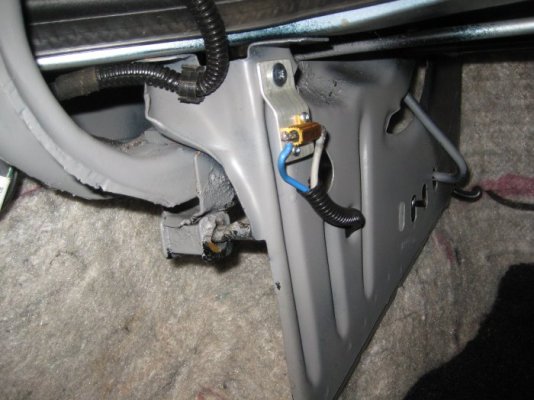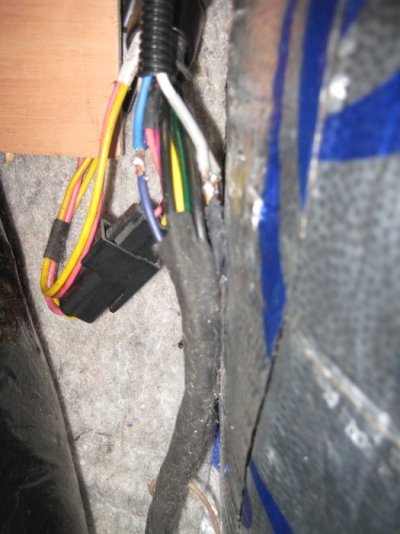Fresh Air Inspector
Well-Known Member
Hello All,
Had an interesting challenge when I replaced the original fuel sending unit with an aftermarket one; Spectra Premium FG62A (via Rock Auto). I don't know if anyone has experienced this issue but I thought it may save someone time and frustration correcting the problem.
Background
My '88 Caravelle (aka Gran Fury), was in a barn from 2009 until I purchased it in 2022. The previous owner replaced the fuel tank when he pulled the car out of the barn due to the fuel having corroded the tank. Unfortunately, he did not replace the fuel sending unit. :-(
One of the first things I did was pull the tank, installed a new sending unit (original was heavily corroded), adjusted the float on the new unit to match the old one and added about 17 litres (~4.5 US gal.), to the tank. I expected the gauge to register about 1/4 tank, unfortunately it did not. The needle struggled to move above empty. Curious, I added another 22 litres (~5.8 US gal.), to the tank for a total of ~39 litres (10.3 US gal.). The gauge didn't even manage 1/4 when it should have been just over 1/2 (68 litre / 18 US gal.).
Testing
First thing I did was test the gauge by shorting to ground the wire (dark blue in my car), from the tank to the gauge. The gauge immediately went to 'F' indicating the gauge was fine. Next, I measured the resistance of the sending unit - it showed ~33 Ohm. According to the specifications from Spectra the sending unit range is 75 Ohms empty and 10 Ohms full. According to the specs this is correct for ~1/2 tank of full. To say I was puzzled is an understatement.
I decided to experiment and pulled a 33 Ohm / 10 Watt resistor from my box of electronic bits, temporarily placed across the two wires from the sending unit (dark blue and grey in my case). Doing this creates a resistance of ~16.5 Ohm. Interestingly my gauge now shows just over 1/2 which is what I was expecting.
I added another 20 litres (~5.3 US gal.), for a total of ~59 litres (~15.6 US gal.), and the gauge registered close to F as expected.
Conclusion
Testing the sending unit verified that it operated within the stated specifications. Which means the Plymouth fuel gauge was expecting lower resistance values to be accurate. So, beware if you replace the sending unit and end up with unusual fuel gauge readings.
Below is a picture of the resistor I mounted in the trunk for easy access in case I want to substitute a variable resistor to 'fine tune' the fuel gauge readings. The other picture shows the wiring harness behind the rear seat back, drivers side. I tapped into the original dark blue with black tracer (DB / BK) and grey (GY), wires. Solder joints have since been coated and wrapped with electrical tape. Apologies for the blurry image, auto focus on the camera is a little too sensitive.
Hope it helps!


Had an interesting challenge when I replaced the original fuel sending unit with an aftermarket one; Spectra Premium FG62A (via Rock Auto). I don't know if anyone has experienced this issue but I thought it may save someone time and frustration correcting the problem.
Background
My '88 Caravelle (aka Gran Fury), was in a barn from 2009 until I purchased it in 2022. The previous owner replaced the fuel tank when he pulled the car out of the barn due to the fuel having corroded the tank. Unfortunately, he did not replace the fuel sending unit. :-(
One of the first things I did was pull the tank, installed a new sending unit (original was heavily corroded), adjusted the float on the new unit to match the old one and added about 17 litres (~4.5 US gal.), to the tank. I expected the gauge to register about 1/4 tank, unfortunately it did not. The needle struggled to move above empty. Curious, I added another 22 litres (~5.8 US gal.), to the tank for a total of ~39 litres (10.3 US gal.). The gauge didn't even manage 1/4 when it should have been just over 1/2 (68 litre / 18 US gal.).
Testing
First thing I did was test the gauge by shorting to ground the wire (dark blue in my car), from the tank to the gauge. The gauge immediately went to 'F' indicating the gauge was fine. Next, I measured the resistance of the sending unit - it showed ~33 Ohm. According to the specifications from Spectra the sending unit range is 75 Ohms empty and 10 Ohms full. According to the specs this is correct for ~1/2 tank of full. To say I was puzzled is an understatement.
I decided to experiment and pulled a 33 Ohm / 10 Watt resistor from my box of electronic bits, temporarily placed across the two wires from the sending unit (dark blue and grey in my case). Doing this creates a resistance of ~16.5 Ohm. Interestingly my gauge now shows just over 1/2 which is what I was expecting.
I added another 20 litres (~5.3 US gal.), for a total of ~59 litres (~15.6 US gal.), and the gauge registered close to F as expected.
Conclusion
Testing the sending unit verified that it operated within the stated specifications. Which means the Plymouth fuel gauge was expecting lower resistance values to be accurate. So, beware if you replace the sending unit and end up with unusual fuel gauge readings.
Below is a picture of the resistor I mounted in the trunk for easy access in case I want to substitute a variable resistor to 'fine tune' the fuel gauge readings. The other picture shows the wiring harness behind the rear seat back, drivers side. I tapped into the original dark blue with black tracer (DB / BK) and grey (GY), wires. Solder joints have since been coated and wrapped with electrical tape. Apologies for the blurry image, auto focus on the camera is a little too sensitive.
Hope it helps!


















